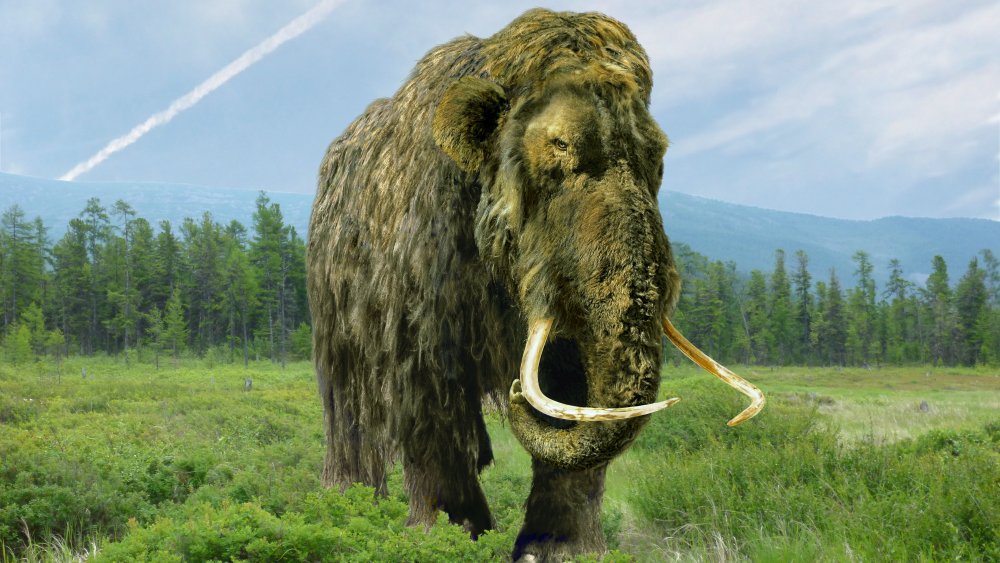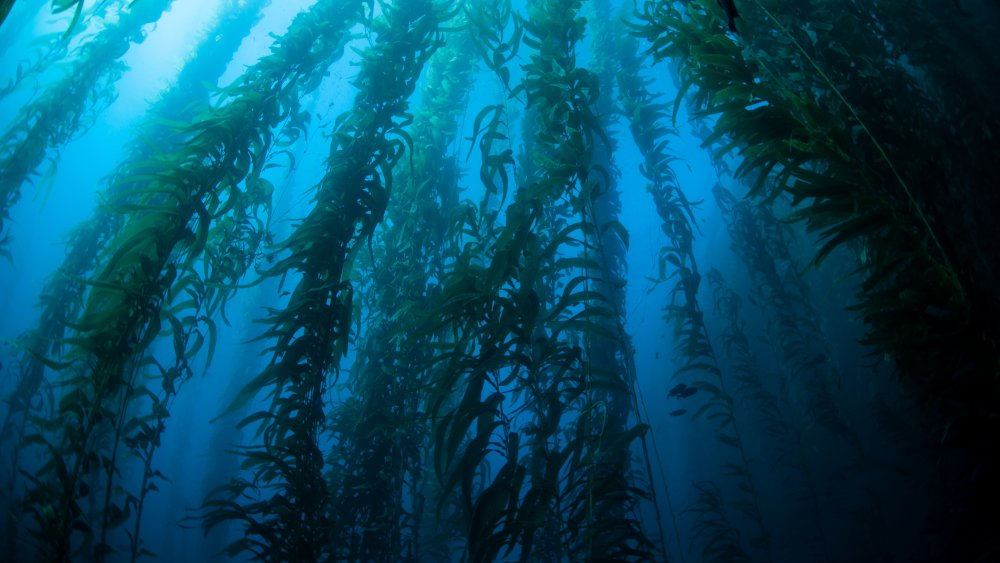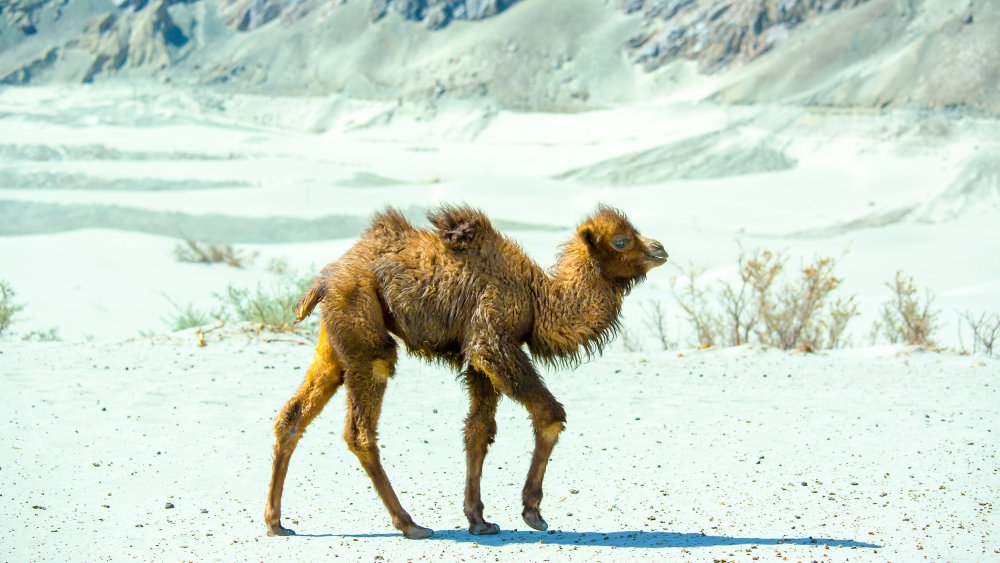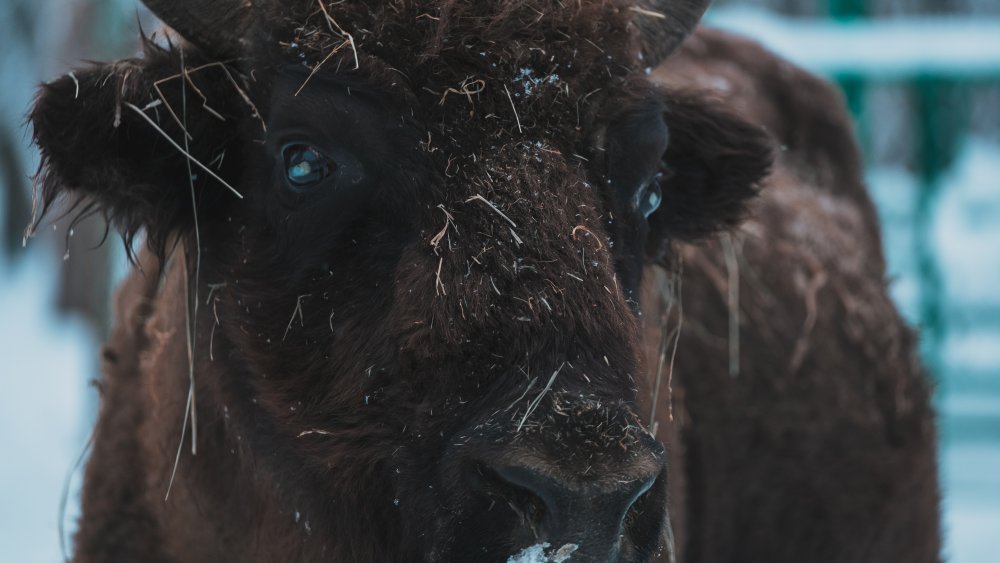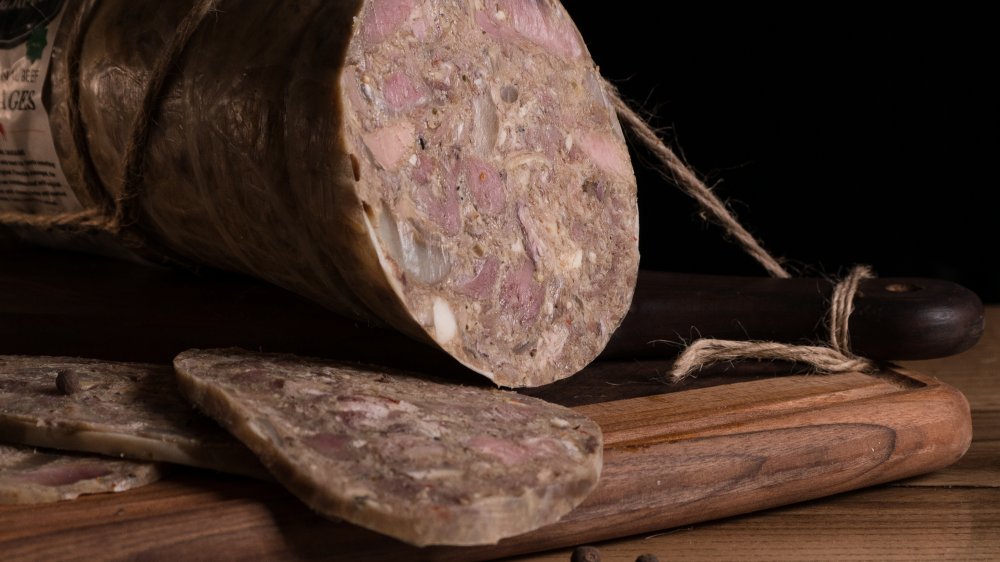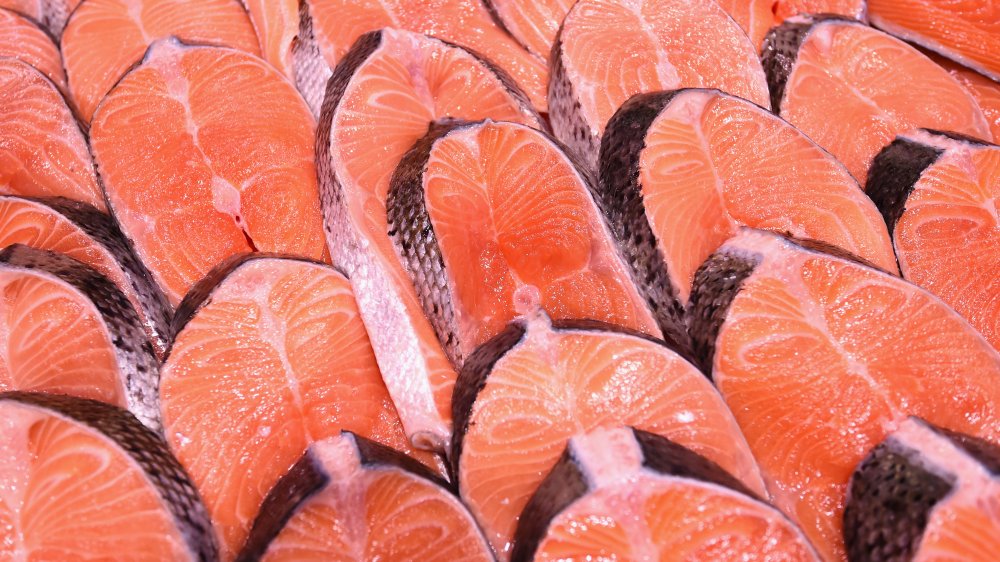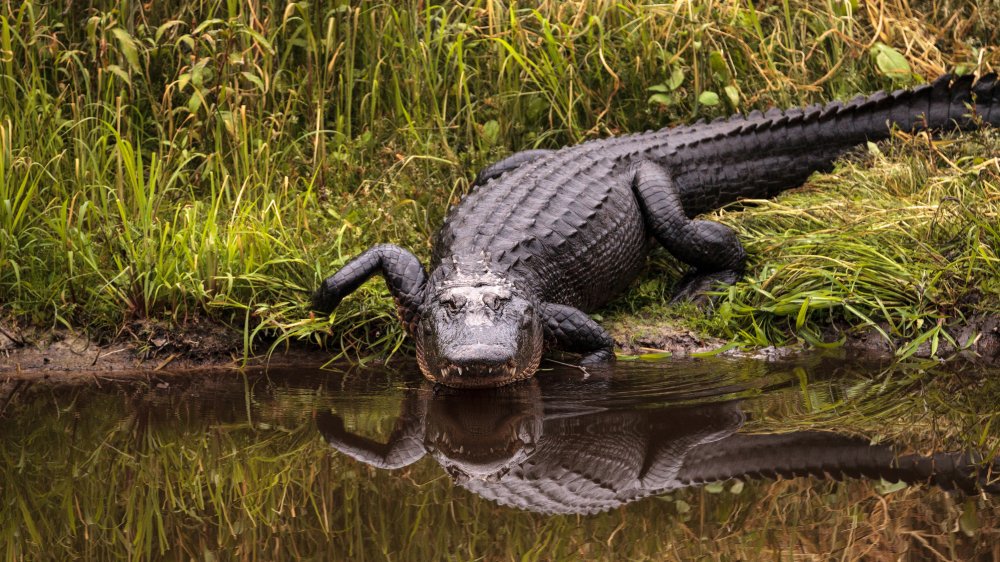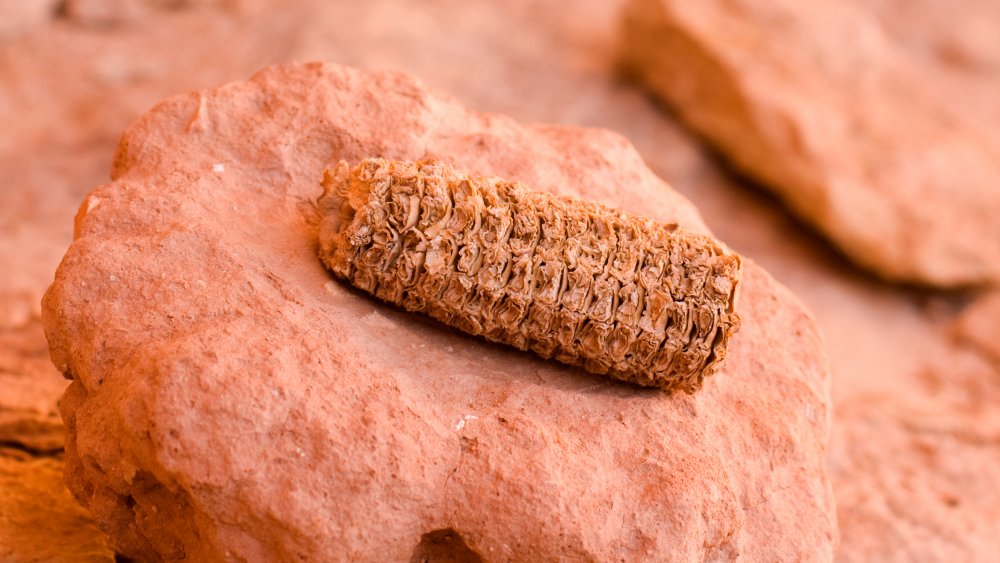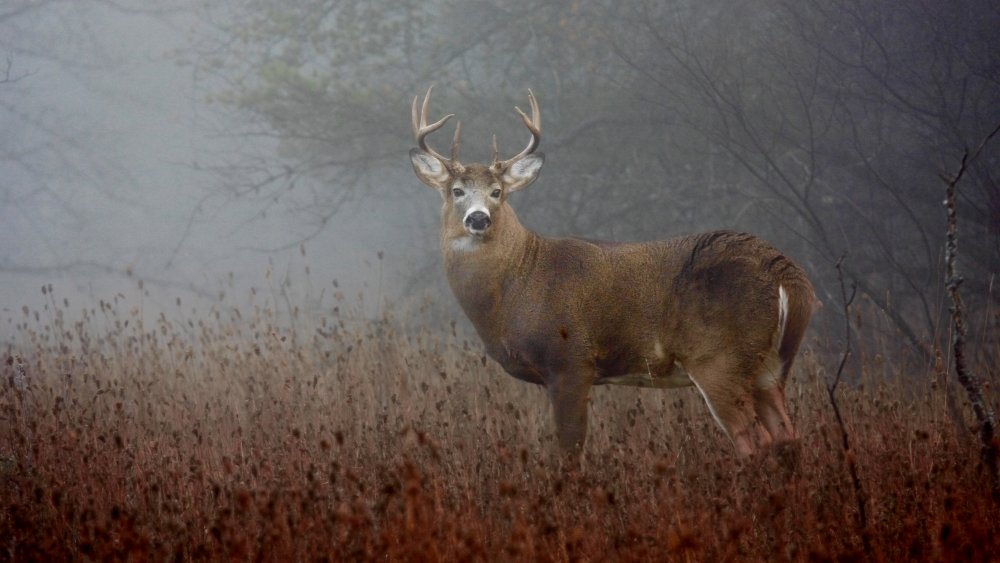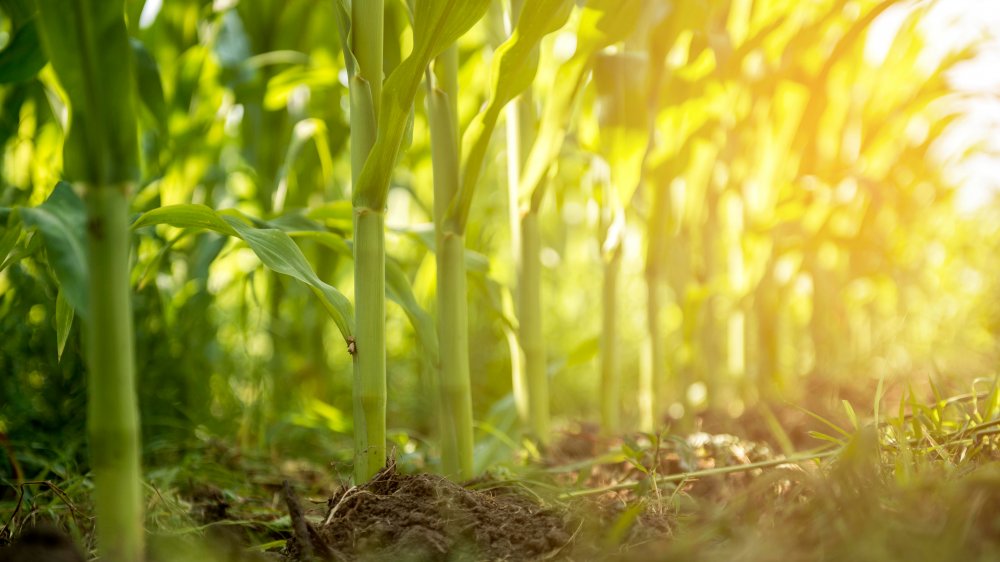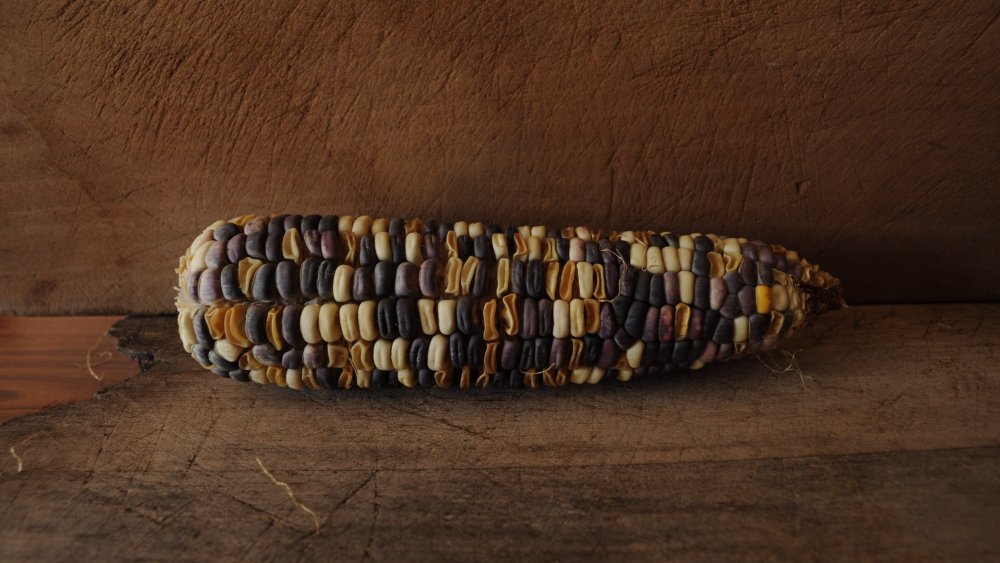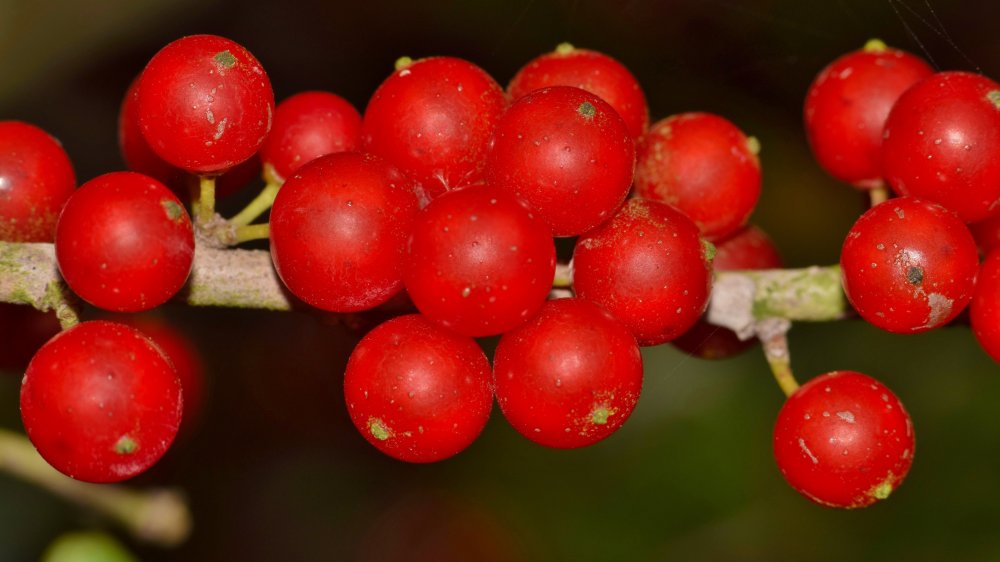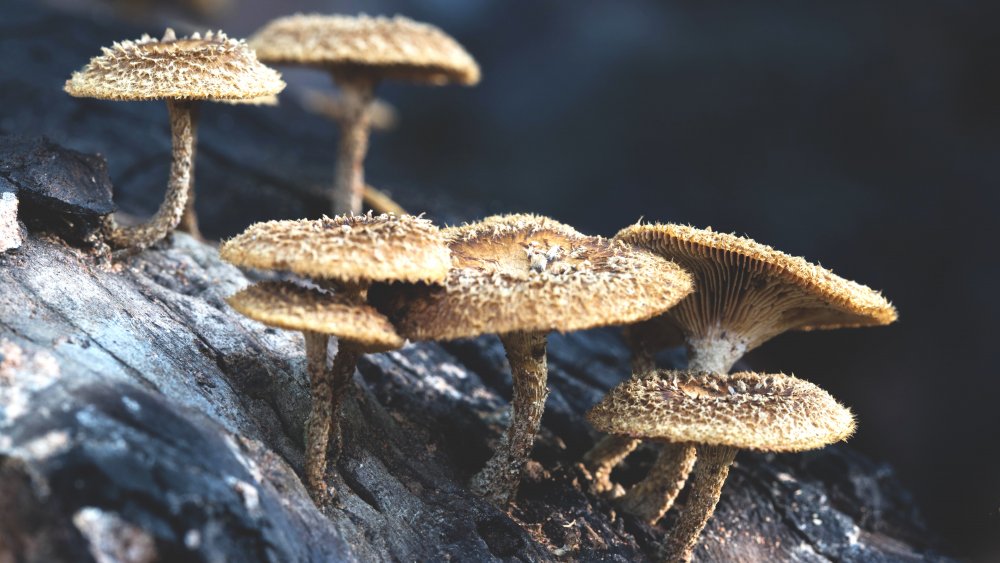What Native Americans Ate Every Day Before Europeans Came
When it comes to what our ancestor-Americans ate, we mostly hear about a certain period of time: after the white people arrived. And even that's largely wrong. According to the Smithsonian, Native Americans and colonial Europeans weren't exactly sharing mashed potatoes and pie: it was more along the lines of venison, porridge, and various types of wild- and water-fowl. But hey, turkey was probably there, so at least we got that much right.
Finding out exactly what was on the menu at the first Thanksgiving was complicated, so imagine how tough it is to go even further back? Historians have some written record of menu and diet in the early colonial period... but what about before the written record? Go back far enough, and we have to rely on some seriously clever archaeology to learn just how and what early Americans ate. And here's the thing: putting dinner on the table had to be a terrifying, oftentimes death-defying, and always full-time job.
There's a strange footnote to this, too. While many of their foods just aren't even around anymore, others have cropped up as recently-discovered trendy new dining options, perfect for the all-natural hipster crowd. New? Not so much.
The ultra-trendy diet of the very first 'Americans'
There's a lot we don't know about our world, including just how people first came to the American continent. You've probably heard the idea that early settlers walked to America via a land bridge connecting Russia and Alaska, but that's not the only theory.
There's another one that suggests they didn't walk at all, but sailed. This one — which National Geographic says is called the "kelp highway" theory — is pretty much the go-to theory now. It says that sailors skirted along the coastline of the Pacific Rim, and traveled all the way from Asia, north along the Pacific Coast of what's now Canada, and reached the tip of South America. Pretty awesome, right?
And it's entirely possible they did it because they knew they had a virtually inexhaustible food source through the entire journey: edible kelp and seaweed. Today, we know (via Healthline) that seaweed is incredibly healthy — it's full of vitamins and nutrients, antioxidants, and fiber, and it even helps regulate blood sugar and keep heart attacks at bay. For early explorers, this would have been brilliant. ThoughtCo. says that prehistoric landings sites — now submerged — have been discovered, suggesting they could pull into port, then kick back to dine on seaweed and kelp, along with whatever other marine animals (like otters, seals, whales, and dolphins), shellfish, and fish they may have found in this uncharted and undoubtedly wonderful land.
The Clovis: America's OG hunters
The Clovis are called that because their existence was first confirmed by spearheads in Clovis, New Mexico, but according to National Geographic, Clovis sites have been discovered all across what's now the US, Mexico, and Central America. While they likely weren't the first people to set foot on American soil, they were responsible for some of the earliest settlements and, according to Texas A&M University's Center for the Study of the First Americas, they were such good hunters they've been blamed for the mass extinction of one of their favorite meals: the mammoth.
The rise of the Clovis does coincide with the downfall of the mammoths, along with other Pleistocene megafauna. Coincidence? Maybe. Bones found across 19 Clovis sites suggest that while they were eating a lot of mammoth, they were also eating bison, mastodon, deer, rabbits, and caribou. They weren't just carnivores, either: occasionally, there's evidence that things like blackberries were on the menu.
There are a few footnotes to this, too. Diet depended greatly on what was nearby, and megafauna seems to be the overwhelming preference. According to Nature, Clovis hunters in Mexico stalked the gomphotheres, a massive, elephant-like creature that also went extinct during this period. And in Canada? The Smithsonian says they hunted something even more surprising: camels. Camels roamed wide sections of what's now Canada, until the Clovis (probably) hunted them to extinction. People: ruining things since prehistoric times.
The Folsom: hunters of the Great Plains
According to Britannica, the Folsom people lived in the area of the Great Plains from around 9000 to 8000 BC. Given the sheer number of knives, blades, and distinct, leaf-shaped projectiles they left behind, it's clear they were more hunters than gatherers.
And here's what sets the Folsom apart from the earlier Clovis people: ThoughtCo. says that while the Clovis were hunting mammoths, that prey died off and forced later people to find something else to hunt. The answer was the bison, and because bison are faster, lighter, and smaller than mammoths, new technology — the projectile points developed by the Folsom — was developed to make hunting them much more efficient. They didn't use spears like the Clovis; instead, they were hunting with arrows or darts.
The Folsom people were so dependent on bison for their food source that they were migratory, following the great herds across the plains as they moved. And these weren't the bison we think of today, either: these were Bison antiquus, a now-extinct type of animal that was, well, massive. These, says the San Diego Global Zoo Library, were about 15 feet long, stood around seven feet tall at the shoulder, and had horns with a 3-foot span. Compare that to a modern-day bison that's around 10 feet long (via LiveScience) and you'll have a whole new appreciation for anyone who faces one armed with some arrows.
The Plano: prehistoric preppers
Somewhere between 7000 and 4500 BC, the Plano culture emerged and were defined not only by their diet — which largely revolved around the massive bison that roamed the plains — but by their hunting techniques, traditions, and the development of something new: a preservation method.
According to Indian Terms of the Americas, when the Plano hunted, they hunted a lot. It's believed they're the first to transition from hunting individual bison to using the definitely icky-sounding method of the buffalo jump, where large groups of people herded bison to the edge of a cliff... then over the edge. While that sounds horribly wasteful, there's a bit more to the tale: according to American Indians in US History, the Plano also developed a way of preserving the meat. It would first be dried in the sun, then mixed with seeds, berries, and fat. Then, they'd pack the meat mixture into the animal's intestines, to make a sort of prehistoric sausage that we called pemmican now.
So, on one hand, while the idea of slaughtering bison en masse might seem incredibly wasteful, they did at least perfect a way of preserving much of the meat. It wasn't to last, though: when weather patterns shifted and helped in the reduction of herd numbers, the Plano — heavily dependent on bison as a food source — ultimately disappeared.
The Yurok: Salmon and seaweed and slugs, oh my!
The Yurok are a little unique in that they trace their history back to pre-European contact, and they're still around in the 21st century. And in many respects, they still hold on to the old ways — and that includes a continued reliance on some of the same foods.
That, says The Yurok Tribe's official history, has always been given by the bounty of the ocean and the rivers: they've traditionally lived along the Klamath River and along the coast of California, and relied on foods like seaweed, mussels, salmon, sturgeon, and candlefish as the backbone of their diet. They've also long relied on what the land provided: deer and elk, particularly, but also acorns, berries, and various types of teas... as well as, says Castor Magazine, banana slugs. For generations, they've harvested from the land with an eye on sustainability, but today's members of the Yurok say (via Eating Well) that it's "not the same world," their ancestors cared for, and that "the earth is a living organism, and we are making it sick."
In the 21st century, the Yurok are still harvesting the same mussel beds and wild salmonberry bushes they have been for generations, and they're hoping to teach future generations to do the same.
Poverty Point: the Gulf Coast's prehistoric mound-builders
The Poverty Point Heritage Center is located in Louisiana, and they say it was about the same time that Stonehenge was being built that Native Americans were moving around 2 million cubic yards of dirt and building massive mounds, earthworks, and circles. The site was mysteriously abandoned around 1100 BC, but the earthworks — and traces of the builders' everyday lives — remained.
According to 64 Parishes, the Poverty Point settlement was made up of a central core and around 60 other sites, spanning outwards for a distance of only a little over 20 miles. In addition to clay objects and lots of gorgeous clay owls, it seems as though these satellite sites were partially responsible for processing specific foods unique to their location.
Most of their food came from the water: fish was their majority protein source, but archaeologists have also discovered traces of nuts, aquatic plants, and tubers. Louisiana State Archaeology adds that since no signs of agriculture have been found, it's safe to assume that they were strictly hunter-gatherers, not farmers. What else were they hunting? The people of Poverty Point — and similar cultures along the Gulf Coast — have left behind the bones of their kills: while freshwater fish was definitely tops, they also ate turtles, snakes, alligators, and frogs, as well as small mammals (like rabbits and squirrels), and waterfowl (like ducks and geese.) Wait, alligators? We're guessing alligator-hunting day was kinda like the prehistoric version of Monday.
Anasazi: A history of selectively breeding crops... and cannibalism
The Anasazi are perhaps best known for their incredible cave dwellings, chiseled out of the rock of the American southwest. But they're notable for other reasons, too: according to the Cliff Dwellings Museum, they marked a shift between the hunter-gatherers and an agricultural society.
Around 1200 BC, the people who would become the Anasazi started settling in one area long enough to grow crops. At first, that was corn — and they didn't just grow it, they selectively cross-bred crops in order to create new, hardier varieties. By 500, they were also growing beans, and later added squash to their diet, too — which was supplemented with animals like rabbits and deer. It's also worth noting that they were huge fans of something that's still trendy today: sun-drying. Most of their veggies were sun-dried, and in the early years of the Anasazi they would have been stored in baskets. Later, pottery storage containers took over.
So, what is this about cannibalism? It's unclear just what happened to the Anasazi, but according to the Smithsonian, there are signs their society started descending into anarchy. Leadership dispatched "goon squads" to keep the peace, and villages turned on each other. Eventually, village rivalries turned into massacres that ended in mass slaughter and cannibalism, horrors that lasted for centuries — even after the arrival of the Spanish.
The Hopewell: Ancient trading networks
Between 100 BC and 500 AD, what would become America was dominated by a single culture: the Hopewell. According to ThoughtCo., they didn't just have settlements that stretched from Florida to West Virginia, and across the Mississippi River, but they were also connected in a vast trade network that went all the way into Yellowstone.
The result was that while many areas had their own set diets — which often included a mix of local animals (particularly deer and fish) and plants (nuts, seeds, and berries) — they also had access to goods from other areas. While it's not clear how much was traded and how much was brought along with seasonal migrations, we do know that local goods were often found very far from home.
The Yellowstone area, for example, was a source of bighorn sheep (particularly the horns) and obsidian, while the Great Lakes supplied copper and silver, and the Appalachian areas had mica and steatite — many of which were used for tools, making it possible to carry out the kind of agriculture that allowed the mass production of things like tobacco, sunflowers, and knotweed. And this was a huge deal: According to Ohio History Central, the agricultural system that defined the Hopewell marked the official shift to agricultural societies.
The Oneota: The last people of prehistory
ThoughtCo. says that it's not clear just where the Oneota came from, but we do know that they settled along the northern Mississippi River and its tributaries. And given that one of the tools most commonly associated with them are stone scrapers used for cleaning buffalo hides, well, the assumption that they hunted a lot of buffalo is a correct one.
The Oneota appeared around 1150 and faded away after coming into contact with French trappers — in the intervening centuries, they survived on what the Iowa Office of the State Archaeologist calls a "mixed economy." While they were still hunting — particularly bison and deer, with the occasional elk being thrown in for variety — they were also growing crops like corn, beans, and squash. They also relied heavily on plants that we consider weeds today — goosefoot and pigweed were major dietary staples. And sadly... on the "occasional" list were fish, birds, and dogs.
How do we know this? Because the Oneota stored many of their perishable food items in deep, bell-shaped pits that were then covered with logs and hides to keep the scavengers out and the food as fresh as possible, which have yielded a treasure trove of information for archaeologists.
Fort Walton: Potters of the floodplains
The Fort Walton Culture is the name given to the people who lived and flourished around northern Florida and the Mississippi River delta in the centuries leading up to European occupation and starting around 1200. They came after a group called the Weeden Island Culture, and for the most part, they gravitated toward living in and around swamps and lakes.
One of the things they were really, really good at was making ceramics, and this is a big deal, says the Trail of Florida's Indian Heritage. Pottery vessels were tempered with shells, and that was needed for cooking the large amounts of corn that was being grown. It wasn't like the corn we think of today, though: it was small, with kernels so hard that it gave the corn a nickname: flint corn. It was mostly used to make hominy, hence the importance of the cooking vessels.
Fishing and seafood were also a major part of life, and so was something called the "black drink." Made from Yaupon holly, it wasn't so much to eat as it was to, well, do the opposite of eating. Purging the stomach was part of a ritual leading up to eating green corn, and here's the weird thing: the drink didn't actually make people vomit, instead, the vomiting was a learned behavior associated with the drink. The mind is a powerful — and strange — thing.
Cahokia: America's famous Midwestern mound-builders
When you think of America's prehistoric mound-builders, you're probably thinking of the Cahokia. They were at the height of their power between 1050 and 1200, and at the time, the Cahokia Mounds complex had tens of thousands of residents, and all those people needed to eat.
According to Washington University in St. Louis, they absolutely revered the hard-working farmers that kept the masses fed. Farmers were respected, and for good reason — they cultivated and domesticated crops like the bottle gourd, squash, knotweed, and sunflowers, not only growing them but also making them much more productive. They developed pretty modern-sounding farming techniques, too, like burning away underbrush and inferior trees to help the stronger plants grow.
The Cahokia weren't so different from us in a major way: they needed their caffeine pick-me-up, too. According to Atlas Obscura, analysis of the residue still left on Cahokia drinking cups show they love their cassina. It was a type of tea made from a native holly (pictured) that comes with a healthy dose of caffeine, and while drinking holly might sound odd, it's really not. They're another group of trend-setters — they were drinking a cousin of yerba mate. It was so popular that once Europeans did show up, they documented the widespread use of it every day.
Pueblo: Surviving in the harsh deserts of the Southwest
In 2017, artist Roxanne Swentzell spoke to Cowboys & Indians about a project she'd been working on for a while: a cookbook, based on the ancient, traditional foods of the Pueblo, updated for a modern audience. She did it in hopes of helping alleviate the pain of some of the chronic health problems plaguing Native Americans of the 21st century.
So, what did her traditional diet consist of? First was the big game — deer, elk, buffalo, antelope, and bighorn sheep — which went a little further than the smaller but more abundant game. Those were animals like birds, squirrels, and even rats. Then, there were the plants that were gathered: teas, berries, roots, and mushrooms. And as far as farming, that meant tracking down seeds for things like beans, squash, and corn.
And there's a footnote to the story: Swentzell recruited a group of people who agreed to eat nothing but traditional foods for three months. Most had chronic health issues, like diabetes and high cholesterol. They went to the doctor before, and after, and the results? "It was incredible," Swentzell said. "The doctors were blown away. To help someone from diabetes or heart disease or an issue like mine, the cholesterol problem, in three months to have it level-lined good, it was phenomenal."
